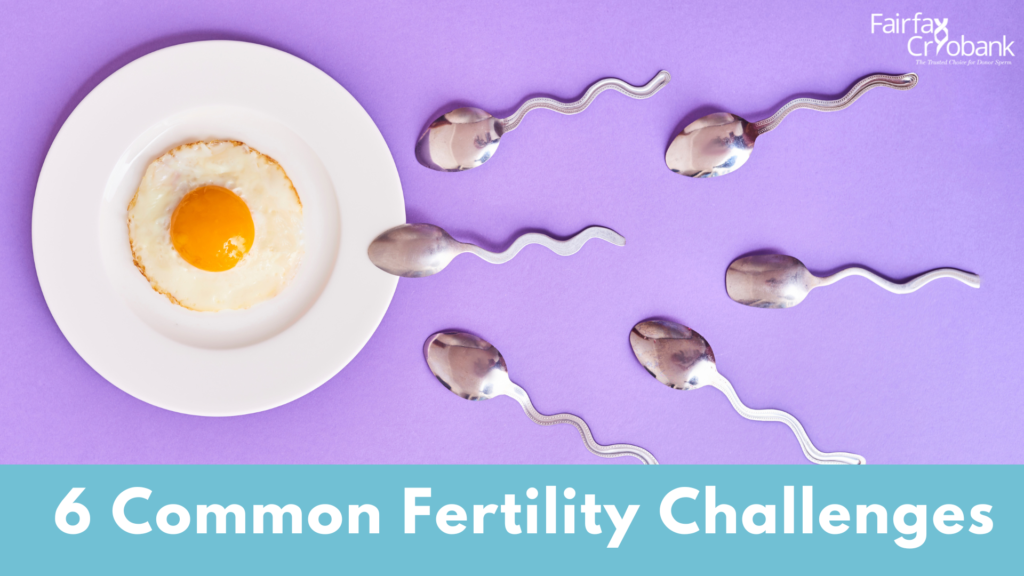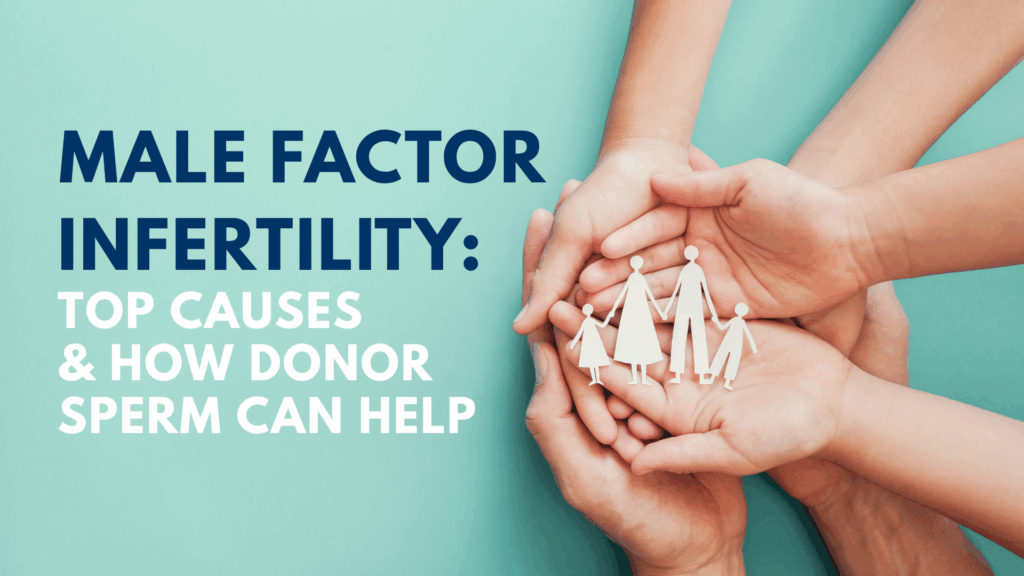6 COMMON FERTILITY CHALLENGES

Fertility challenges are tough, no matter what their cause. Treatments can be emotionally and physically grueling. There is also a stressful period of uncertainty while the doctor identifies the cause. For couples where both partners (or both sets of genetic material) have healthy fertility, regular intercourse or insemination typically will conceive a pregnancy within a year. The reality is that 17.5% of the adult population – roughly 1 in 6 worldwide – experience infertility.
Infertility and Subfertility
Infertility is the inability to get pregnant after trying to conceive for a year, affecting about 10% percent of women in the US. Subfertility (different from infertility) means that conceiving without medical intervention is possible but will likely take longer than a year. Many reproductive factors can cause or impact infertility and subfertility—let’s explore them.
Ovulation
For a successful conception, an egg must be released and fertilized by sperm. The most common causes of fertility challenges are issues with ovulation, including:
PCOS (polycystic ovarian syndrome) is a common condition that affects up to 12% of women. It causes hormonal imbalances, irregular menstrual cycles, and ovarian cysts (amongst many other symptoms), making getting pregnant challenging.
Hypothalamus and pituitary gland conditions, which affect ovarian function
Age or health-related conditions like DOR (diminished ovarian reserve) and POI (premature ovarian insufficiency), which cause the ovaries to slow down or stop producing eggs
Uterine Factors
The uterus is designed to grow a baby, but sometimes congenital conditions or adult-onset uterine issues can present challenges to pregnancy. Uterine issues include:
- Fibroids: benign growths made of muscle can vary in size and quantity
- Polyps: endometrial tissue growths that can prevent implantation or block the fallopian tubes
- Uterine abnormalities, including a bicornate, septate, or double uterus, can make the uterus structurally less able to carry a pregnancy
- Cervical issues: previous cervical surgeries, abnormal cervical mucus, and the presence of antibodies can kill or hinder sperm
Fallopian Tube Structure
Fallopian tubes are the channels that connect the uterus and the ovaries. Ovulation is the egg transit from the ovaries via the fallopian tubes. When the fallopian tubes are blocked, they can cause what’s known as structural infertility. Structural infertility can be caused by the following:
- Endometriosis, which can cause blocked fallopian tubes
- Active PID (pelvic inflammatory disease) or a history of gonorrhea or chlamydia can all cause blockages in the fallopian tubes
- Scar tissue or adhesions from trauma or surgery
Sperm Quality
Male-factor infertility is important to rule out before taking on costly and difficult diagnostic tests for a female partner. If sperm has low count, motility (speed), or poor morphology (shape), that can affect the ability to conceive a pregnancy. Sometimes these factors are influenced by medical conditions, including:
- Gonorrhea or chlamydia
- HIV
- Diabetes
- Mumps
- Cancer
- Genetic conditions like Klinefelter syndrome
- Lifestyle factors like excessive sauna use or frequently using a laptop computer over the groin area
Sperm Delivery
To successfully conceive pregnancy through intercourse, sperm is ejaculated into the partner’s vagina. If this is not possible, it challenges the couple’s fertility. Conditions that can cause issues with sperm delivery include:
- Testicular blockages
- Testicular injury (present or past)
- Premature ejaculation
General Infertility Risk Factors
Poor health, whether genetic or lifestyle based, can negatively impact fertility, as can age.
- Being over 35 (for women) or over 40 (for men) can present a challenge to fertility
- Being metabolically unwell (overweight or underweight) can impact fertility
- Smoking, drug use, poor diet, and excessive alcohol use can be a factor
- Exposure to stress, environmental toxins, radiation, and some medications can reduce fertility
Facing Fertility Challenges with Science
Modern science has made considerable strides in treating infertility and subfertility, allowing many people to have children despite fertility challenges. While treating infertility can be an art and a science, the hard truth for some is that their infertility remains unexplained. Working closely with a trusted fertility doctor or reproductive endocrinologist is the best way forward if you suspect or are experiencing issues with fertility. They’ll be able to guide you through the newest science, shed light on your unique situation, and counsel you on your best options as you navigate the tricky waters of fertility treatments.
If you’re considering using donor sperm, you can find a donor here that matches your needs and specifications: https://fairfaxcryobank.com/search/







